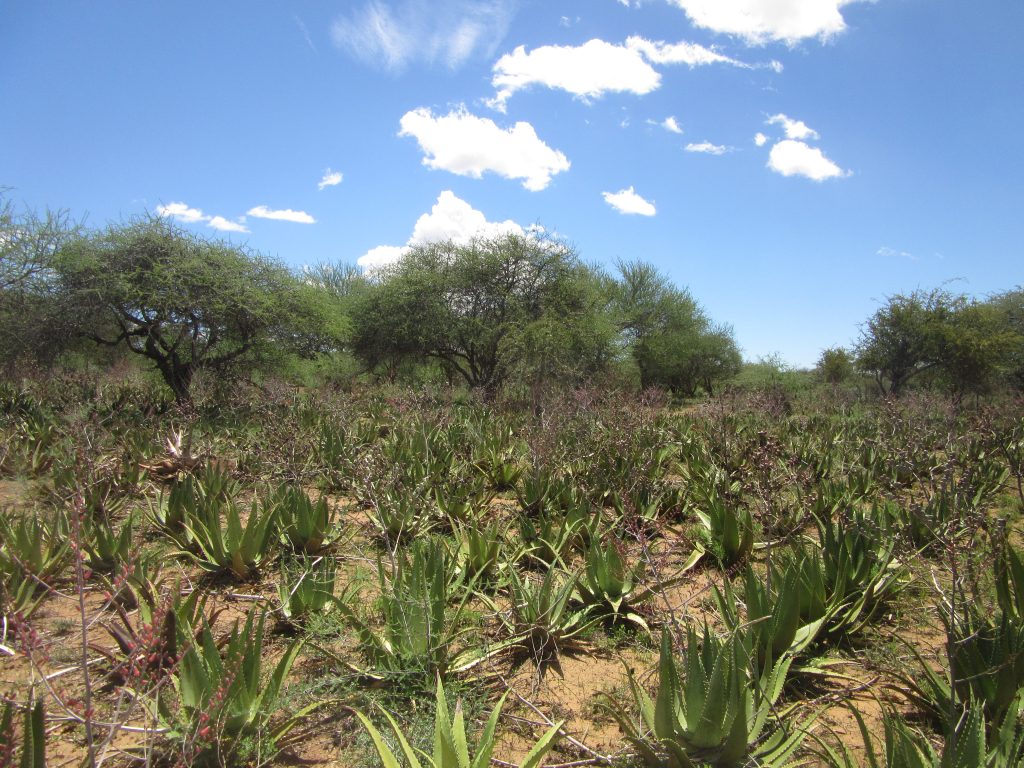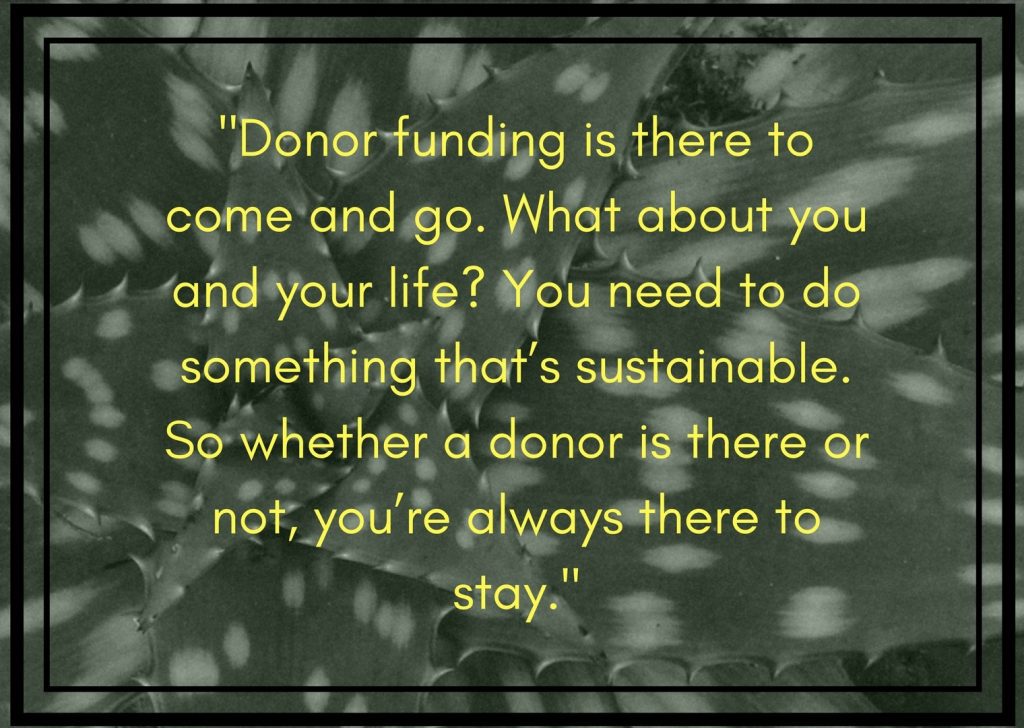This is the third blog from guest editor, Wangũi Kamonji – researcher, storyteller, dancer, community builder, teacher and learner.
Joseph Lentunyoi and the Laikipia Permaculture Centre
Interested to find out what the buzz in environmental circles regarding permaculture was about, I took a permaculture design course in May this year. I found myself at Laikipia Permaculture Centre, a 3 acre demonstration site that Joseph Lentunyoi set up on land donated by his father. The centre is located in a dry region but it was thriving and green contrasting sharply with the land around it. Lentunyoi is from a pastoralist background and studied organic farming at undergraduate level going on to become a permaculture teacher. In 2012, he co-founded the Permaculture Research Institute-Kenya that offers permaculture courses and supports budding permaculturalists. I had a conversation with him to find out more about what he thinks the role and potential of permaculture in community empowerment is.
What is permaculture to you?
I would define permaculture in a general way as sustainable human settlements in a holistic approach, so that everyone can take it up. Here in Laikipia, for example, we’re talking about building peace, livelihoods, and about degraded landscapes, so we take that approach.
What are some projects you’re involved with?
Laikipia Permaculture Centre is a demonstration site in Laikipia County where we’re teaching systems to grow food, take care of the environment, of animals, and take care of ourselves too. We work with some Maasai women’s groups in the region who are growing aloe for commercial sale, controlling soil erosion, and improving their lives. We are also working with individuals, schools and organisations in at least 6 other counties to spread the concept of permaculture and set up demonstration projects. It’s very important to translate from classroom theory to practice outside and doing it ourselves with our hands, even as teachers.
How has the reception to permaculture been?
When we started theory work and drawing the designs for the women’s group farms and the centre it was hard. But after 2 years, when things started working, and we saw a food forest coming up, we saw animals like rabbits and chickens being kept on these farms and what we were teaching being practised, then the attitude changed. People started saying “Oh wow, look this food forest is growing very well, the beehives are being colonised and we are getting honey. We are seeing the landscape healing from the degraded landscape we knew before.”
In Africa or in Kenya, people like believing things by seeing. And we have seen visitors coming to Laikipia Permaculture Centre and believing permaculture by seeing the space without necessarily seeing a teacher. So when people leave they are excited and they want to do it themselves.
What are some challenges you have faced along the way?
One is that there is no source of funding for permaculture, I think across the world. So for Laikipia Permaculture Centre and with PRI-Kenya we persuaded our friends and families and used our own resources to get started.
On the other hand, I discovered in my work in communities that people have become used to being offered money to attend trainings from big donors. So they wanted to be paid to come to the courses, and even when we showed them very simple things that didn’t need big funding they would say “Give us money so we can dig swales.” Then I’d ask, “Why do I need to give you money to dig a swale in your own farm? Or in your own project?”
This was a challenge to the extent that people would not attend our meetings because there were no per diems. But slowly the few people who came without that and implemented began to see results. Then eventually those who were looking to the allowances started coming back and saying, “I also want this.” Which is good.
What are some of your triumphs so far?
The women’s groups we work with have established some commercial enterprises, growing and selling aloe to a cosmetics company and they make money out of that, and that’s good, because this was a resource that was there and they’re able to sell it and add food crops alongside it for their own benefit.
We’ve been telling the communities we work with, donor funding is there to come and go. What about you and your life? You need to do something that’s sustainable. When funding drops you can’t also vanish from existence. That’s not the permaculture principle.
I would also point to what I call “model farmers”. People who came here for training or for a visit who have started implementing what they saw. They do it in their own small farms with minimal help, with the resources that they have, even though they’re not permaculture teachers, and they’re not doing commercial stuff.
Demonstration sites contain a lot of things that are expensive but as a farmer, you’re not necessarily going to build everything at the site on your farm. But you are going to grow food for your family, you’re going to take care of your animals, you’re going to control soil erosion. When the farmers around you come and see, they still learn something and start doing it around their farms even if they have not taken a permaculture course. In this way the whole community starts changing slowly.
How does permaculture support peace-building?
In regions where we have conflicts, it is often due to scarce resources. In Northern Kenya for example, scarcity of water and grass for animals and people is a driver of conflict. Pastoralists are fighting because everybody is trying to access scarce resources. If people are not aware of what to do with their land so that they make it more productive in terms of pasture for animals, trying to tap water when its available, then they have to move to other regions to go and get these scarce resources, which creates frictions and conflict.
So we are building peace in the context of showing people how to take care of their own land to be able to provide what is needed.
We can use the local people themselves to bring peace amongst themselves. And when we know the challenges that are bringing the conflict, when we address that scrambling for natural resources, then we are fixing the problem. We need to demonstrate the solutions so that peace prevails.
What is true empowerment according to you?
True empowerment means you are able to provide for your basic needs of food, of water and other things especially from a rural grassroots community’s point of view where people are still struggling for basic needs. You’re able to access education, you’re able to be aware of what is happening.
And how do we do that? To do that is to make people aware of what their resources are, and how you can get and utilise them. For example, the basic needs for the Maasai is of course food, water and other things for their animals and for themselves. But how do we build the systems to provide these needs? How do we restore the ecosystem to give us water? How do we restore the ecosystem so that climate change is reduced? So that there is more water and more pasture for the animals and people stay in peace? Permaculture enables us to do this.
What is the future of permaculture in Kenya?
One of the concepts I believe in is to inspire people. And to inspire people is to tell them the realities of life and how to go about things. One of the permaculture principles is, ‘a problem is a solution’. So you must go back to examples to show how to rethink problems in this way.
We want to train more people to be good teachers so that information gets to the people in a good way. How we disseminate the information matters a lot.
Of late, I’m also discovering that we need to get into politics so that we’re able to choose the government of the day, and we’re able to influence them as far as decisions regarding livelihoods are concerned. Because governments are also working on these issues, but if they don’t understand what we do, then it becomes difficult working together because we’re not like-minded.
My vision and dream is to see everybody, especially in East Africa, recognise what permaculture is, practise it and change the way we do things, and change the land that we live on. And also try to recognise and reconnect to the reality of life when it comes to our culture when it comes to our beliefs and transferring these to our children because they’re looking upon us for the good life that they will live on the planet.
What is the environment to you?
To me the environment is the life that we live, the environment is the planet earth. And if we don’t take care of the environment: the soils, the breath, the air, the trees, the atmosphere; if we don’t take care of it we will perish.
 About the author – Wangũi Kamonji
About the author – Wangũi Kamonji
From Kenya we have Wangũi Kamonji, a researcher, storyteller, dancer, community builder, teacher and learner. “I am fascinated by design, traditions, urban issues and their rural sources, communities’ responses to environmental issues, and food (and other forms of) sovereignty. I write the blog fromtheroots.co.ke where I report on my findings from countries around the world including Brazil, Colombia, Mexico, South Africa, Tanzania, Kenya, India, Italy and Vietnam. In particular I explore how we can regenerate and revive the knowledge, education, economics, relationships, and environments to create a new just world”.
While blogging for Transition, Wangũi will explore African environmentalism and African environmentalists in order to expand the face of who is considered an environmentalist in this large diverse continent, and which issues of concern exist besides the mildly stereotypical trees and wildlife. She will consider the place of the environmental consciousness from the viewpoint of some African environmentalists, their journeys, challenges, and triumphs.







